Introduction
Entomology, the study of insects and related arthropods, is a relatively recent addition to the forensic investigator’s toolkit. Because insects have predictable life histories, habitats and developmental stages, the presence or absence of certain species at a crime scene – particularly a homicide – can provide important clues regarding when, where and even how that crime occurred. The 1990s saw a resurgence of interest in forensic investigations by entomologists.
Because insects play an important role in the decomposition process, the category ‘medicolegal forensic entomology’ has been used to describe the arthropod involvement in events surrounding felonies, usually violent crimes such as murder, suicide and rape. While a corpse covered with fly larvae (maggots) may be offensive to most people, it should be remembered that organisms such as maggots and beetles fill an important ecological niche in removing dead animals from the landscape. That certain species of insects have evolved to specialize in feeding on dead and decaying flesh, and do so in a predictable manner, allows a forensic entomologist to determine how long a corpse has been exposed to insects. Most frequently, the forensic entomologist is asked to determine the interval between death and corpse discovery, referred to as the postmortem interval (PMI). Determination of the postmortem interval is based on two major principles: (1) that the colonization of a corpse by insects follows a reasonably predictable succession of species; and (2) that developmental time for each stage of each species of insect is also predictable. Both of these principles are heavily influenced by environmental conditions, particularly temperature.
Entomological Succession
When an animal dies, it goes through five succession-al stages of decomposition that coincide with the activity of bacteria and insects (Table 1). The duration of each stage is directly related to the air temperature to which the corpse is exposed, as will be discussed below. While the length of each stage varies with temperature, the series of stages itself is very predictable, and a forensic entomologist can estimate time of death based on the stage of decomposition, the insects present, and past temperature data. Adult flies are generally the first insects to arrive at a corpse, appearing within minutes or hours after death to lay eggs or live larvae in some instances. Several thousand eggs may be laid on a corpse in a short period of time and the resulting maggots are the most important group of insects on a corpse, for they will eventually consume most of the decaying flesh. Maggot activity, and thus decomposition of the corpse, is greatest through the decay stage (Table 1). Through this level of de-composition, an entomologist can determine the PMI with a high degree of confidence by looking at the developmental stages ofthe maggots present. After the decay stage, when most of the flesh is gone, changes in the corpse and the insect fauna occur at a much slower rate, and it becomes increasingly difficult for a forensic entomologist to determine the PMI accurately. These later successional stages are dominated by dermestid beetles (Fig. 1), carrion beetles (Fig. 2), and other insects that feed on the dried flesh, skin and hair that remain on the corpse.
Table 1 Stages of decomposition, duration and associated arthropod fauna
| Stage of decomposition | Accumulated time3 | Common insects found |
| (days) | ||
| Fresh | ||
| Commences at the moment of death | 0-3 | Adult blowflies, flesh flies, muscid flies, yellow |
| and ends when bloating is evident. | jackets, ants, daddy longlegs | |
| The breakdown of proteins and | ||
| carbohydrate molecules occurs | ||
| during this stage | ||
| Bloated | ||
| Putrefaction occurs during this stage. | 4-7 | Adult and larval blowflies, flesh flies, muscid flies, |
| Gases produced from metabolic | rove beetles, hister beetles, carrion beetles, ants, assassin | |
| activities of the anaerobic bacteria | bugs, yellow jackets | |
| cause the corpse to inflate | ||
| Decay | ||
| Begins when the abdominal wall is | 8-18 | Adult and larval blowflies, rove and hister beetles, carrion |
| broken, allowing gases to escape and | beetles, dermestid beetles, ants, scarab beetles, muscid | |
| the corpse to deflate | flies, cockroaches, red-legged ham beetles | |
| Postdecay | ||
| In dry habitats, remains consist of dry | 19-30Dermestid and hister beetles, mites, fungus beetles, springtails, | |
| skin, cartilage and bones. In wet | fungus gnats, fruit flies, cheese skipper flies, phorid flies | |
| habitats, a wet viscous material, | ||
| termed byproducts of decomposition, | ||
| are found around corpse | ||
| Dry | ||
| Bones, hair, dry skin remain. Odor that of | 31 + | Dermestid beetles, ants, cheese skipper flies, sow bugs, soldier |
| normal soil and litter | flies, ground beetles | |
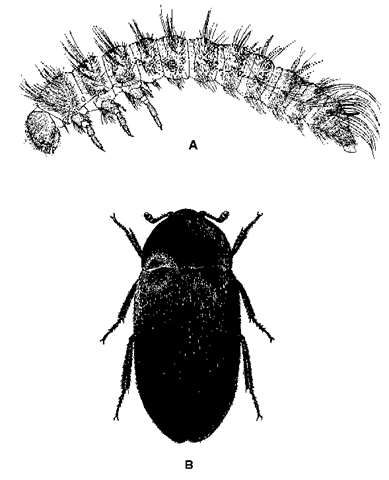
Figure 1 Dermestid beetles. (A) Larva; (B) adult.
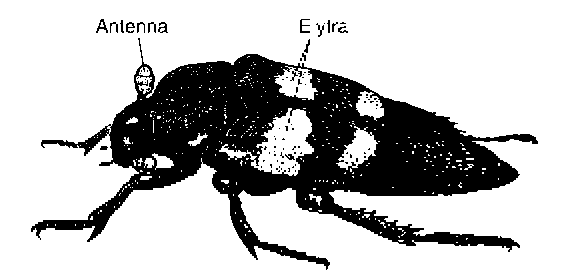
Figure 2 Adult carrion beetle, Nicrophorus sp. (20-25 mm in length).
Life Cycle of a Fly
Without a doubt, the flies (order Diptera) are the most important group of insects that forensic entomologists use in determining the PMI. Two families of flies in particular have evolved to specialize on carrion: blowflies (Calliphoridae), and the flesh flies (Sarcophagidae). Blowflies are generally medium- to large-sized insects, with a metallic green or blue color, and are often referred to as ‘greenbottle’ and ‘bluebottle’ flies (Fig. 3). Adult female blow flies may begin to lay eggs on a corpse within minutes to hours after an individual dies. Egg laying, or oviposition, for these flies is primarily a daylight activity, and as such, may be delayed for several hours if a corpse is deposited during the night time. Eggs are initially deposited around naturally moist open areas of the body, such as eyes, nose, ears and mouth, but also are laid around wounds. A single adult female blowfly may lay up to several hundred eggs in a short period of time. Flesh flies are usually gray with black longitudinal stripes (Fig. 4). Female flesh flies deposit tiny live larvae in the same areas of the body where blowfly eggs are laid. The maggots of flesh flies are usually much less numerous than blow fly maggots.
The order Diptera undergo holometabolous metamorphosis (complete change) and with this type of metamorphosis the larvae or immatures are totally unlike the adults. Whether deposited as eggs or as small maggots, the larvae of flies go through three developmental forms, or instars, increasing dramatically in size during each instar before molting into the next instar (Fig. 5). The soft-bodied maggots feed on decaying flesh with hook-like mouthparts, and secrete enzymes that help them digest this food. The maggots breathe through slit-like structures at the posterior end of their bodies (posterior spiracles), and entomologists use the variations in these breathing structures and the shape of the internal larval head called the cephalopharyngeal skeleton to help them identify species (Fig. 6). As a larva progresses from the first to the third instar, its size increases tenfold and, accordingly, its appetite also increases proportionately. It is when the maggots have reached the third larval instar that most of the corpse biomass is consumed and the loss of flesh is most pronounced. At the end of the third and final larval instar, the maggots go through a briefpostfeeding, prepupal, wandering or migration (all synonymous) stage. At this time, they begin to crawl away from the corpse and have been known to migrate up to 50 meters from the food source and burrow into the soft soil or leaflitter. At the end of the migration stage, the last larval instar begins to shorten and turn darker with age, mobility is reduced, and formation of the pupal stage starts. It is the exoskeleton of the third larval instar that forms the outer hardened casing know as the puparium, and within this structure the pupa is formed (Fig. 5). Inside each puparium a pupa slowly metamorphoses into an adult fly, which in several days time emerges to seek another corpse.
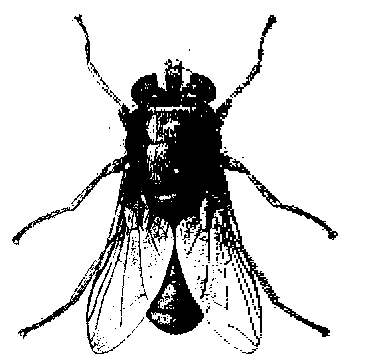
Figure 3 Adult blowfly, Phaenicia sericata.
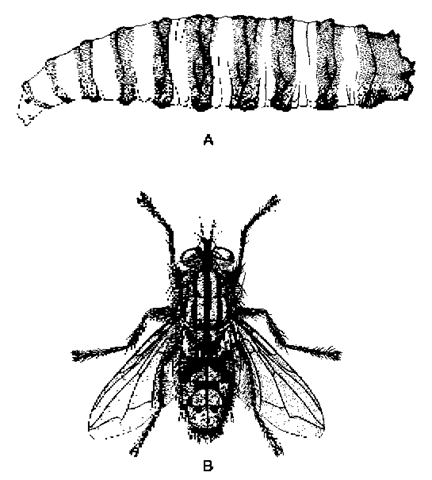
Figure 4 Flesh flies. (A) Larva; (B) adult.
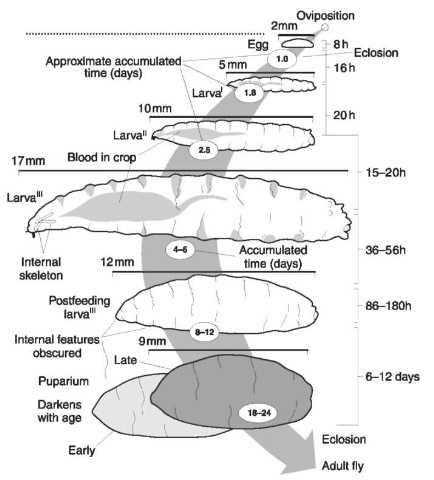
Figure 5 Hypothetical development of an immature blowfly.
Importance of Temperature
Insects are poikilothermic (cold-blooded), in that their temperature is greatly influenced by the temperature of their macro- and microenvironment, and thus their development is closely tied to temperature. Generally, the warmer the temperature (up to some tolerance point of the insect), the faster development occurs (Fig. 7). The faster insects develop on a corpse, the faster decomposition will occur. A body left in the open on a hot summer day may be reduced to bones in a little over a week, whereas a corpse left out in the late autumn or winter may show little change for months. Entomologists have carefully studied the development of several species of carrion-feeding flies, determining their thermal requirements for completing each stage of development, from egg to adult (Fig. 8). These thermal requirements are expressed in temperature-time units called degree-days or degree-hours. It may be easiest to think of degree-days or degree-hours as accumulations of heat units over time. A hot summer day will accumulate abundant heat units, while a cool autumn day will accumulate few, if any. If a species of fly requires 400 degree-hours to reach the third larval instar, it may accumulate over 100 of those in a single,warm summer day, whereas it may accumulate only 10 on a cool autumn day. In addition, there is always some threshold temperature below which no development takes place, and below which adult flies are inactive. For most species, this threshold temperature is around 10°C. A corpse deposited at a time when the air temperature is below 10° C will generally not be colonized by flies until the temperature rises.
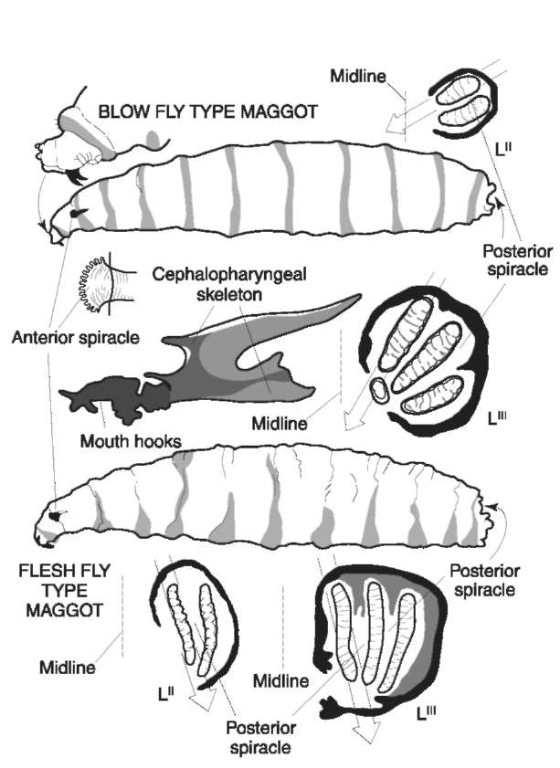
Figure 6 Immature blowfly (above) and flesh fly (below) showing posterior spiracles and internal structures of the head.

Figure 7 Relationship between blowfly development and temperature.
An exception to this temperature-developmental time relationship occurs when huge numbers of second and third larval instars feed in a concentrated ‘maggot mass’. The activity of several hundred fly larvae in a small area can raise the temperature within this mass up to 30°C above the ambient air temperature, and fly larval development may proceed at a much faster pace than might be expected at a given temperature. If a maggot mass is present on a body, a forensic entomologist will usually record the temperature within the mass to help determine the PMI.
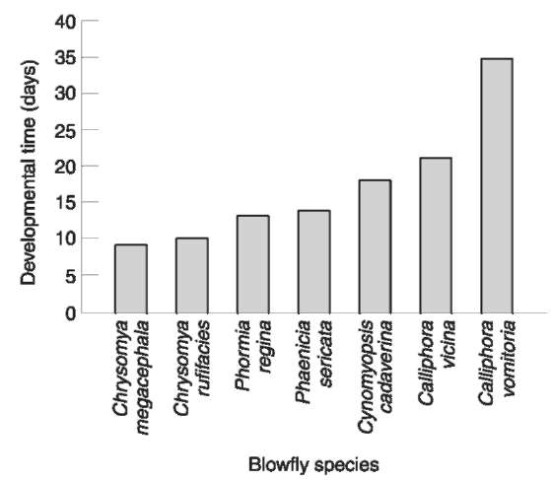
Figure 8 Developmental times for two tropical species
Determination of the Postmortem Interval
A forensic entomologist can determine the postmortem interval by one of two methods. The first -and more precise – method involves identifying the species of flies (larvae and/or pupae) collected from the body at the time of discovery, determining the growth stage the flies are in, and calculating how long it would take them to reach this stage given the environmental temperatures at the scene. This tells the entomologist how old the flies are, in days. Because adult flies will usually lay eggs on a corpse within minutes or hours after death, knowing how old the fly larvae are gives a close approximation of time of death. In order to calculate the PMI accurately, the forensic entomologist must be able to identify the species of fly or flies present on the body, must be working with the oldest, and many times the largest, fly larvae present at the scene, must have access to nearby temperature records, and must know the thermal requirements for growth of the species of flies. Working backward in time from corpse discovery, an entomologist calculates the accumulated thermal units (degree-days or degree-hours) using local temperature records, which are usually obtained from the nearest weather station. The PMI is determined when the degree units calculated from local conditions match those drawn from baseline studies under controlled laboratory regimens, and are the ones required for the fly larvae to reach the developmental stage they were in when the corpse was discovered.
The second method of determining the PMI involves examining the composition of the insect community on the body and determining the successional stage of decay. This method is usually only employed in cases of advanced decay, after most of the flies have pupariated and emerged as adults. By this time most of the flesh has been removed from the corpse by maggots, so much of what remains is hair, skin and bone. Changes in the insect community and the corpse itself during this stage occur very slowly, making determination of the PMI much more difficult. The entomologist uses the presence of various beetle species and other insects to estimate the time of death, and usually must present a possible time range rather than an exact date.
Factors Affecting Determination of Time of Death and the Postmortem Interval
Any factor that makes a corpse inaccessible to insect colonization can affect the accuracy of determining time of death based on the PMI. As mentioned above, nighttime and cold temperatures, as well as rain, will delay adult flies from ovipositing. In addition, factors that physically prevent insects from reaching a corpse can delay colonization for potentially long periods of time. Such factors include submergence under water, burial underground, storage in a sealed container, caskets or wrapping, and enclosure in a freezer, closed vehicle or building. While these factors will often delay insect colonization, rarely will they totally prevent it. Flies are very adept at locating corpses, and will usually find a way into a closed vehicle or building. A specific group of flies (Phoridae) have members that have been found 1-2 meters below the ground in association with coffined bodies, hence the name ‘coffin flies’. Various studies have been conducted to determine how long the factors listed above will delay insect colonization ofa corpse, and the forensic entomologist uses these to calculate accurately the time of death.
Collecting Entomological Evidence
When a corpse that contains insects is encountered, a trained forensic entomologist should be called upon to collect specimens. If a forensic entomologist is not available, it is imperative that a collection be taken in the field as soon as possible. If maggots are present on the body, the largest specimens must be collected, along with a representative sample of other sizes. The largest maggots will generally be the oldest, and thus represent the earliest colonizers of the corpse. If an entomologist is to make an accurate determination of the PMI, he or she must have possession of the oldest maggots present at the scene. The investigator should search the surface surrounding the body for maggots crawling away to pupate, and also dig in the surrounding soil (up to 2-3 meters away from the body) for fly puparia. Once again, failure to collect the oldest stage of developing flies will seriously undermine the determination of the PMI for the entomologist. If no maggots are visible, search the body -particularly around the eyes, ears, nose and mouth -for fly eggs, which will look like small grains of rice. Care should also be taken to collect insects from underneath the body once it has been removed. Detailed field notes as to the climatological conditions and location and condition of the body (e.g. rainfall, full sun, shade, fog, position of the body, wounds, etc.) and visual observations of the insects active in and around the remains should be made, as they can be of important value at a later time in the investigation. In addition, photographs of the crime scene should include close-ups of entomological evidence. If flying insects are present over the body, an aerial sweep net can be used to collect fast flying or fast crawling adult insects. These can then be placed in a wide-mouth killing jar containing ethyl acetate and later pinned or placed in ethanol for subsequent identification.
The sample of insects collected from the body itself should be placed in a vial or jar containing alcohol (ethanol or isopropyl) along with a label (written in pencil) that includes the case number, date, time, collector and where on the body the specimens were collected. If at all possible, larvae first should be killed in boiling water and then transferred to ethanol to prevent shrinkage in larval size. However, this may not be practical, in which case they should be placed directly into alcohol. Maggots collected away from the body should be preserved separately, as should any fly puparia, and this information should be noted on the label. If possible, live specimens also should be collected. An entomologist may wish to rear these specimens to adults to aid in identification. Puparia can be placed in a jar with some of the surrounding soil, vermiculite or sand. A few live maggots can be placed in a jar and transferred as soon as possible to an aluminum foil envelope containing a small amount of fresh beef liver. Live specimens should be kept in a warm – not hot – place until handed over to an entomologist. All specimens, live and preserved, should be delivered to a qualified forensic entomologist as soon as possible for analysis. Copies of crime scene notes and photographs also should be provided.
Additional Value of Insects at Crime Scenes
While aiding in the determination of time of death by calculating the postmortem interval is the most common job of the forensic entomologist, analysis of insects at a crime scene also can reveal further information. Maggots and pupae can be analyzed for toxicological trace elements when, owing to decomposition, more traditional sources such as blood and tissue samples are no longer available. Traces of cocaine and other drugs have been obtained from insects present on a corpse, and have been used to determine probable cause of death. In addition, research has shown that maggots feeding on tissue containing cocaine experience accelerated growth. The presence of unusually large maggots, or ‘super maggots’ as they have been called, particularly those feeding around the nasal cavity, may indicate cocaine use by the deceased, and such maggots should be preserved for toxicological analysis.
The presence of maggot activity on areas of the body other than the eyes, nose, ears and mouth prior to the decay stage of decomposition (Table 1) may indicate possible trauma sites. Adult flies will be attracted to wounds and will subsequently lay eggs in such areas. Maggot activity in the female uro-genital and anal areas during the early stages of decomposition may be indicative of rape.
Entomological analysis also can be useful in non-homicide cases, particularly those dealing with neglect and accidental death due to bites or stings. Neglect can often be demonstrated by the presence of maggots in living tissue, such as one might find in a nursing home for elderly people. Certain species of flies lay eggs only in living tissue, and the presence of their maggots on a body – even if the individual has subsequently died – point to invasion before death.
Deaths resulting from the bites or stings of insects, spiders and scorpions are fairly common. The marks left by these bites or stings are usually very small and may be overlooked. Death may be attributed to a heart attack rather than an accident, a conclusion that may be important for insurance purposes. A forensic entomologist, or a physician familiar with such cases, can often recognize evidence of bites and stings.
Summary
Forensic entomology is the study of arthropod-related evidence at a crime scene. Most often, forensic entomologists are called upon to assist in homicide investigations, usually to help in determining the time of death. Insects play an important role in the decomposition process, and colonization of a corpse follows a predictable succession of species and developmental patterns based on air temperatures. The most important group of insects that colonize a corpse is the true flies or Diptera, particularly blowflies. Blowfly larvae are responsible for consuming most of the decaying flesh, and the forensic entomologist uses known developmental times for each life stage of a particular fly species to determine the interval between time of death and corpse discovery (i.e. the postmortem interval). By examining the life stages present on the body at a crime scene, and using temperature data for the time period preceding corpse discovery, a trained forensic entomologist can calculate when the body was initially colonized by insects. Because colonization usually occurs shortly after death, this may be a close approximation of time of death. Factors that delay insect colonization, such as cold temperatures, darkness, rain, burial, etc., will affect the determination of the postmortem interval, and must be considered by the entomologist. Insect evidence can also be useful in providing toxicological and pathological information about the deceased.
